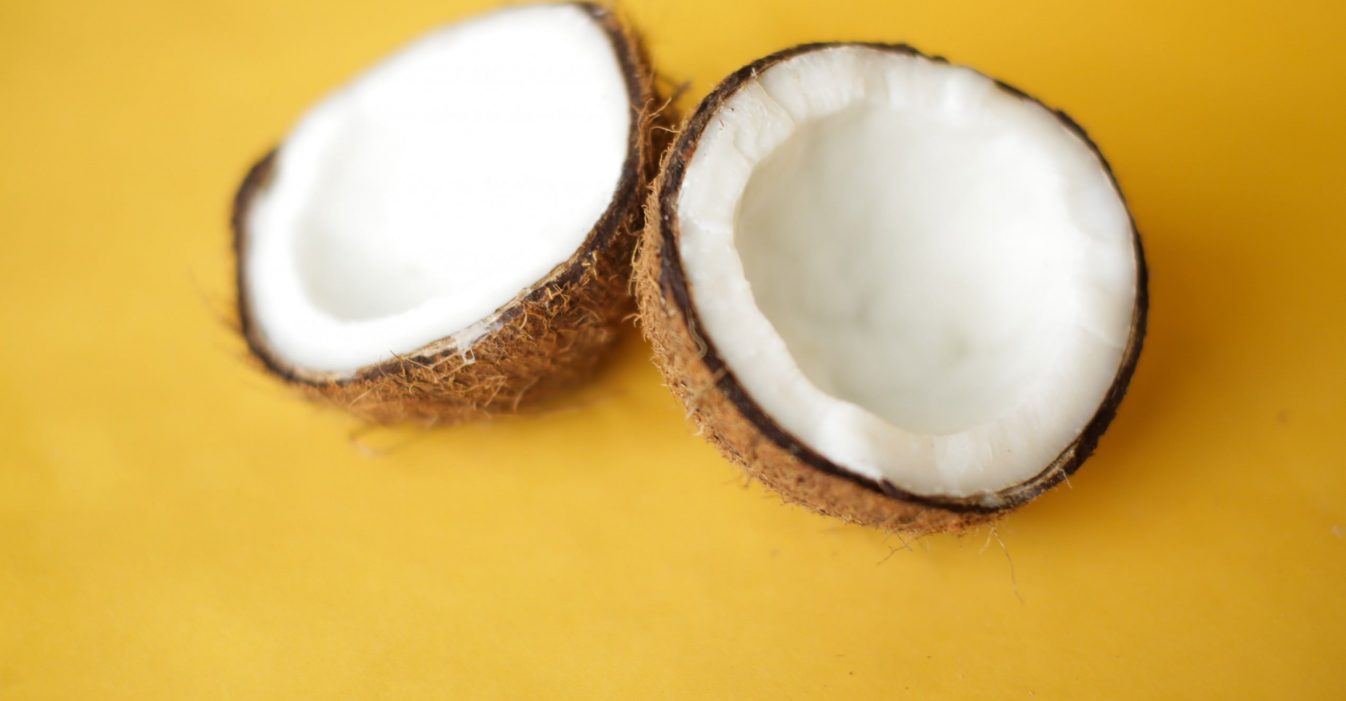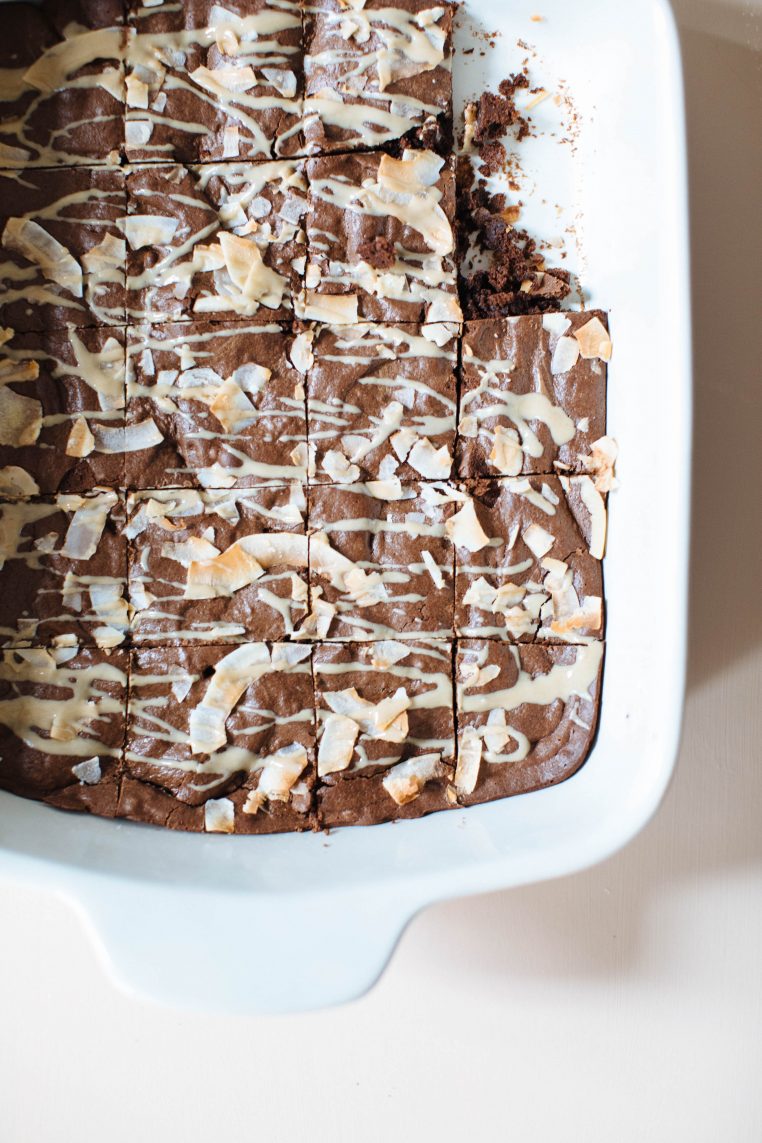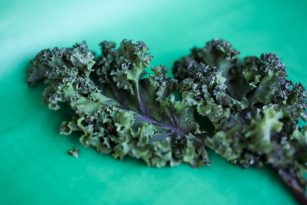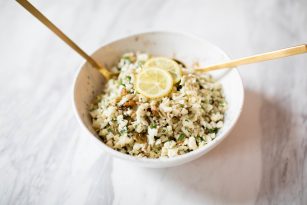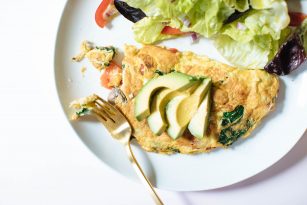Rich in saturated fats, electrolytes, and a host of important micronutrients, the coconut nutrition profile is practically bursting at the seams.
I know you’re probably thinking I must be nuts about coconut with all these posts on coconut milk, coconut flakes, coconut water, or coconut flour, and you’re right! I’m crazy for coconuts, but in a “good” crazy kind of way! Today, let’s talk all about coconut nutrition, including how to use it, how to eat it, and the different types of coconut.
Whenever I mention coconut oil as another cooking oil to be used, I hear roughly the same thing: “Eeek! McKel, that’s a saturated fat!” It sure is. In fact, coconut oil is comprised of about 90% saturated fat. So why do I personally use and recommend this oil in cooking?
The type of fatty acids that make up the coconut nutrition profile are about 65% medium-chain triglycerides, also known as MCTs. Unlike long-chain fatty acids, which make up the majority of fats in our diet, MCTs are able to be used very easily by our bodies. This is because medium-chain triglycerides are passively diffused from our gastrointestinal tract to the portal system. For this reason, our bodies find it super easy to break down the fat before absorbing it and using it for energy in the body.
Coming from a clinical background, MCTs are very commonly used in treating people who have malabsorption issues, epilepsy, or for increasing calories without much volume.
Benefits of Coconut Nutrition
1. May aid in weight management
Adding coconut to your diet is a great strategy to help support long-term weight control. Coconut meat, in particular, is loaded with fiber that can help promote satiety and keep you feeling full to curb cravings. Coconuts are also a great source of medium-chain triglycerides, which may be especially beneficial when it comes to weight control.
One small study actually found that eating between 15-30 grams of MCTs per day bumped up metabolism by 5%. While this may not sound like much, it could add up to almost 200 calories over the course of an entire day (1). Another study also showed that eating MCTs at lunch led to a significant reduction in the amount of calories consumed later in the day, thanks to the satiating effects of this incredible superfood (2).
2. Good source of fiber
With 7 grams packed into each cup, coconut meat is an awesome source of fiber. Not only can fiber be great for fighting cravings and promoting weight loss, but it’s also important when it comes to digestive health as well. Research shows that increasing your intake of fiber could help protect against digestive issues like constipation, hemorrhoids, gastroesophageal reflux disease (GERD), and more. Plus, studies show that higher fiber consumption could be linked to a lower risk of high blood pressure, heart disease, diabetes, and obesity (3).
3. Possesses antimicrobial properties
Several compounds found in coconuts contain powerful antimicrobial properties. Lauric acid, for instance, is a type of saturated fatty acid that has been well-studied for its antimicrobial effects (4). It’s also been shown to kill off specific strains of bacteria like Staphylococcus aureus, a type of dangerous pathogen that can cause serious skin infections (5).
4. Supports skin health
Besides including coconut in your diet, you can also apply it topically to support better skin health. Coconut oil, in particular, is super moisturizing and makes a great addition to any natural skin care routine. One study out of the Philippines actually found that coconut oil was as effective as mineral oil at relieving dry skin (6). Plus, an animal study conducted by the University of Kerala showed that applying virgin coconut oil on the skin of rats enhanced wound healing and increased antioxidant status (7).
Coconut Nutrition Facts
In addition to packing a good amount of healthy fatty acids into each serving, the coconut nutrition profile also boasts a high amount of fiber, manganese, copper and selenium.
One cup of shredded coconut meat contains the following nutrients (8):
- 283 calories
- Carbohydrates: 12 grams
- Protein: 2.7 grams
- Fat: 27 grams
- Fiber: 7 grams
- Manganese: 60% of the DV
- Copper: 17% of the DV
- Selenium: 12% of the DV
- Iron: 11% of the DV
- Phosphorus: 9% of the DV
- Potassium: 8% of the DV
- Zinc: 6% of the DV
- Folate: 5% of the DV
- Thiamine: 4% of the DV
- Vitamin C: 4% of the DV
The coconut nutrition profile also contains vitamin B6, pantothenic acid, calcium, and riboflavin.
How to Choose, Use, and Store Coconuts
When selecting coconuts, be sure to choose one that is relatively heavy for its size. You should also shake it around a bit and listen for liquid sloshing around inside to help you pick the best coconut possible. Before they’ve been cracked open, coconuts can be stored at room temperature. Once you’ve opened the coconut, be sure to store it in the refrigerator to extend its shelf-life.
Wondering how to use coconuts and crack them open? In mature coconuts, there are usually three “eyes” at the top, which you can use to crack the coconut with a hammer. Keep in mind that it generally helps to use the sharp side versus the flat head of the hammer to help it open more efficiently. In young coconuts, a machete works great, but most people don’t usually have machetes laying around in their garage. Instead, I usually use a sharp cleaver knife (like this one) and take three big swings at the top of the young coconut where the tip is. Then, slice three lines to form a triangle surrounding the top tip (see video here).
Coconut Recipes
Looking for some creative ways to kick up your coconut consumption? Check out these delicious coconut recipes for some ideas to get started:
- Coconut Energy Balls
- Red Lentil Daal with Squash
- Chewy Coconut and Fruit Bars
- Coconut Quinoa Porridge
- Coconut Berry Smoothie
Different Forms of Coconut
There are several different forms of coconut available, each of which can contains a unique set of nutrients and can be used in different ways. Here are a few of the most common forms of coconut available, plus some easy ways to add them to your diet:
- Coconut meat: this is the white flesh within the coconut. The coconut meat will vary depending on whether it’s a young coconut (with the green softer shell) or a mature coconut (with the brown hard shell). Young coconuts have very soft coconut meat similar to a gelatin, which is very soft, chewy, and great for blending in recipes. Mature coconuts have a very hard, dense, and fibrous coconut meat with a stronger coconut flavor than young coconuts.
- Coconut water: this is the clear liquid that is within the coconut. Young coconuts will yield a greater amount of coconut water than the mature coconuts. Coconut water is high in natural electrolytes such as potassium and magnesium, plus a small amount of simple sugars, making it a perfect choice for post-workouts. Alternatively, add to water and sip all day long to keep hydrated instead of standard sports drinks with additives and food dyes (no thanks!).
- Coconut milk: this is the liquid that comes from grated coconut meat and is thick, creamy and white (hence the name “milk”). I use it in sweet and savory dishes, including Spicy Coconut Curry and Simply Coconut Milk Ice Cream.
- Coconut oil: this is the edible oil extracted or pressed from the mature coconut meat. This oil will be solid at room temperature and melts around 76 degrees F. When possible, always choose organic, cold-pressed oil and stay away from any coconut oils that say hydrogenated. Not only is coconut oil great for cooking and eating, but you can also use it in your hair as a deep conditioner (you’ll need to wash it out after), and as a skin moisturizer.
- Coconut butter: this form is made by pureeing unsweetened shredded or flaked coconut meat, which produces a combination of coconut oil and coconut meat. It’s great to use instead of butter, it has a naturally sweet flavor and thick creamy texture.
- Coconut flour: this is simply dried and ground coconut meat. I’ve talked about the uses of coconut flour here as well. It’s high in fiber and great for gluten-free, low-carbohydrate baking.
- Coconut shredded flakes: this is made up of mature coconut meat that has been shredded into either very small slivers or large, light flakes. Both are used in baking, raw desserts (my Almond Coconut Date Globes), and toppings. These can be toasted in an oven until golden brown for a nice toasted nutty flavor.
- Coconut shell: What can you do with the shell of a mature coconut? Beauty scrub! Ladies (and gents, no discrimination here), crush the brown shell after using the meat/water from the coconut and add a little of the tiny ground pieces to your body wash. This is a perfect all-natural skin exfoliant.
Where to Find Coconuts
Unless you’re lucky enough to live somewhere tropical, finding fresh coconuts can be a bit of a challenge. Here are a few places you can find the different forms of coconut.
- Fresh young and mature coconut: health food stores, international grocery stores, and occasionally large grocery chains
- Coconut oil: Trader Joe’s, Nutiva, and Artinsana
- Coconut butter: Artisina and Let’s Do Organic
- Coconut flour: Bob’s Red Mill, Coconut Secret Raw flour, Let’s Do Organic, and Honeyville Oragnic
- Coconut water: Zico and O.N.E.
- Coconut milk: Native Forest, Thai Kitchen and more
- Coconut shredded: Let’s Do Organic and Bob’s Red Mill
NS Recommends
Thanks to the impressive coconut nutrition profile, this powerful ingredient has been linked to some serious health benefits. It’s also a great source of several nutrients, including fiber, manganese, copper, and selenium as well as healthy fats like medium-chain . triglycerides. Best of all, it’s also super versatile and can be easily incorporated into your diet in a number of different ways.
If you’re looking for more support and ways to integrate more coconut (and other healthy fruits) into your life, then check out our best-selling Online Education Programs. We offer programs to give you the tools you need for meal planning, learning how to stock your kitchen, give your body a reset with whole foods, and more. Click here to explore what programs are right for you. Or if you’re ready to get started now with making Healthy Eating Simple, then take our free 4-part series, click here to join!

